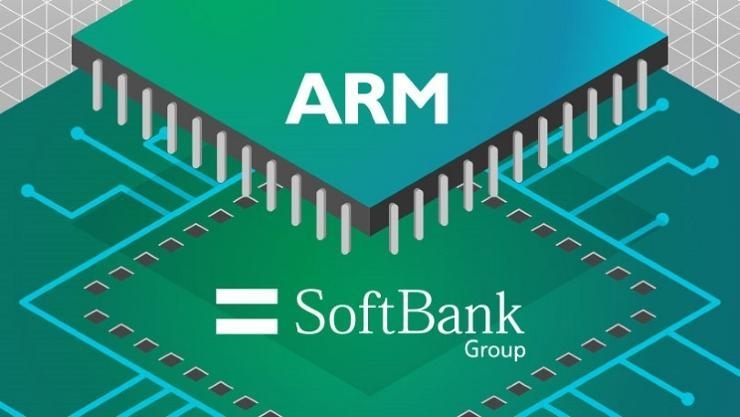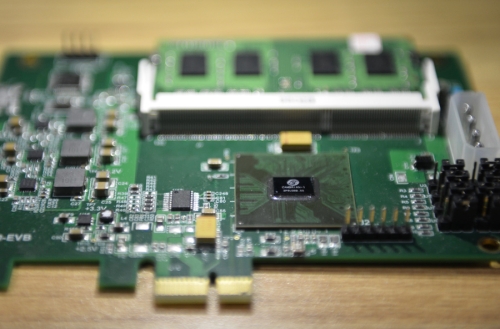
(Photo from Phoenix Technology)
Recently, Japan's Softbank decided to spend 23,400 million pounds to buy British chip design company ARM, this purchase price is equivalent to ARM's 23 times last year's revenue, equivalent to 70 times the 2015 net profit. As for the motives of the acquisition, some media claimed that “Japan Softbank tried to acquire ARM and artificial intelligence related†and said “As for why we want to acquire ARM, we must start from the artificial intelligence dream of Sunyue, the head of Softbank. Softbank has been actively promoting the development in the field of robotics. They have launched Pepper humanoid robots and will continue to enhance the competitiveness of the company's artificial intelligence industry."
So is the truth of the matter as the media say?
| What are the main business of ARM?ARM is an international IC design giant. ARM processors account for about 95% of the world's tablet computers and smart phones. Unlike Intel, which sells chips directly, ARM does not sell chips directly, but sells technology licenses. ARM's product line is very long, from the system IP, physical IP, GPU, video decoding, display and other products. The most widely known is the Cortex family of ARM processors. In its Cortex-A for open systems; Cortex-R for embedded systems; Cortex-M microcontrollers for a variety; pay for SC series, e-government, SIM cards and other security markets. These products became the cornerstone of ARM and Intel's resistance.
In recent years, ARM has actively expanded its market for low-power servers. Although the server market has not yet opened up, the ecology of software has not yet been able to form a climate, and hardware has also met with attacks from Intel's Xeon D-series chips. But in terms of artificial intelligence, ARM has a lot of moves. According to the company’s financial report, there is a Blue Sky Program within the company. In fiscal year 2015 alone, ARM deployed 488 engineers to develop products that “ARM never touched onâ€, and the product area that has not been involved is labor. intelligent. In Japan, Softbank’s conditions will substantially increase the number of ARM’s employees. These expanded employees will also invest in artificial intelligence research and development. Therefore, if the ARM is always regarded as an IC manufacturer confined to an embedded chip, OUT will be eliminated.
|The acquisition of ARM and the development of the relationship between the robotics industryThe robot has three core components: reducer, servo motor and controller. The three parts account for 35%, 25%, and 15% of the total cost of the robot, and the market share of the reducer and servo motor is mostly occupied by the developed countries. - In terms of reducer, Harmonic Japan is the leader in the field of harmonic reducer, occupying about 15% of the global market share; Japan's Nabtesco's global market share in the field of RV reducer is about 60%. In terms of servo motors, Japanese companies account for about 40% of the global market share; German brands such as Siemens, Bosch, Schneider, etc. account for about 30% of the global market share.

(Godson robot controller)
The controller is equivalent to the brain of the robot and is used to issue and transmit motion instructions, including hardware and software:
The software part is mainly control algorithm. The hardware is the industrial control board, including some main control units, signal processing parts and other circuits. The real relationship between ARM and ARM is the chip used by the controller. Although ARM has a certain market share in the controller, the controller does not only use ARM. In fact, the Intel-based X86 chip can also be used as a robot controller, and even a Godson-based robot controller. In addition, there are industrial robot controllers based on DSP and FPGA.
Therefore, in the field of robot controllers, X86, ARM, and MIPS are actually competing in the same stage. There is no X86 in the PC field, and ARM is in a highly monopolistic position in the mobile phone and tablet industry. Therefore, to say that the acquisition of ARM is only for the development of the robotics industry, it is somewhat far-fetched. But there is nothing wrong with saying that the acquisition of ARM has nothing to do with the development of the robotics industry. After all, ARM still occupies a considerable market share in robot controllers.
| Which chips are available for artificial intelligence?Artificial intelligence uses computation as a means to achieve human-like perception or cognitive functions, or to study problem solvers derived from it. In the simplest terms, let the machine simulate the way people think, so that the computer can think in a similar way to the human brain, recognize speech, identify images, understand the meaning of the article.
At present, the two core factors that limit smart development are:
One is that the algorithm has not yet reached perfection, and the understanding of the process of intelligent computing is insufficient.
The second is insufficient hardware performance. The human brain has hundreds of billions of neurons and a complex network of billions of synapses. There are still many orders of magnitude difference between the existing chips and this one.
In order to develop hardware with sufficient performance, researchers used three types of approaches: developing neural network chips, DSPs, and GPUs.
For the development of hardware for artificial intelligence, the first approach is to develop chips specifically for artificial intelligence, that is, neural network chips. The neural network chip can be used to solve practical problems in the fields of machine vision, hearing, and natural language processing. It can be used for convolutional neural networks (CNN), recurrent neural networks (RNN), and long- and short-term memory networks (LSTM) for processing speech and The most typical representative of the natural language network is China's "Cambrian" chip and IBM's "True North."

(Cambrian)
The second approach is to use traditional DSP processor architectures for digital signal processing for processing neural networks (mainly modified in terms of the operators, such as low bit width and transcendental functions), using traditional SIMD/DSP architectures. The technical idea of ​​adapting neural networks has many precedents in the world, and even mature products, such as China's "Star Smart One", CEVA's XM4 processor, Cadence's Tensilica Vision P5 processor, Synopsys EV processor and so on. This kind of DSP can only support neural network forward operations and cannot support neural network training. There is a certain gap compared with neural network chips.
The third approach is to use GPUs. The most typical example is Nvidia's custom GPU for artificial intelligence. However, this GPU has more than a hundred times the power consumption disadvantage compared to neural network chips. The “Cambrian†DianNao is For example, DianNao is a single-core processor with a clock speed of 0.98GHz and a peak performance of 452 billion neural network operations per second. The 65nm power consumption is 0.485W and the area is 3.02mm^2. The experimental results on several representative neural networks show that the average performance of DianNao is comparable to that of mainstream GPGPUs, but the area and power consumption are only one percent of that of mainstream GPGPUs.
So what choice does ARM choose? According to sources, ARM has already started to develop NPU and DSP. It is said that after Softbank acquires ARM, new employees will also be involved in this research. In the future, ARM chips in mobile phones may integrate not only CPUs, GPUs, and DSPs, but also integrate NPUs to provide services related to artificial intelligence to the general public.
| ConclusionSince Google's "Alpha Dogs" battle with Li Shishi, artificial intelligence has become hot and arrogant, and has become the darling of the capital market. This is also the reason that China's "Starlight Intelligence One" is obviously a DSP, but it must claim to be a neural network chip. In the case of recent negative news, it is no different than advancing into artificial intelligence and releasing a positive signal to the capital market. After all, “There is no money is absolutely impossible.†Through some media and capital operation methods, the company’s share price is increased. Softbank is also very helpful.
Lei Feng Network (search "Lei Feng Net" public concern) Note: Author Tie Liu, WeChat public number tieliu1988. Lei Feng network exclusive article, reproduced please contact the authoritative and retain the author and source, not to delete the content.